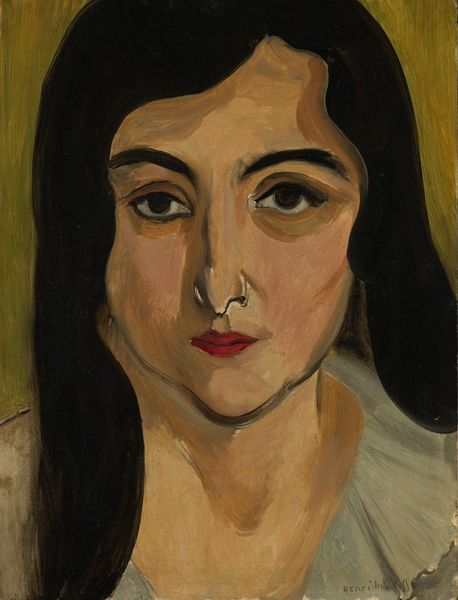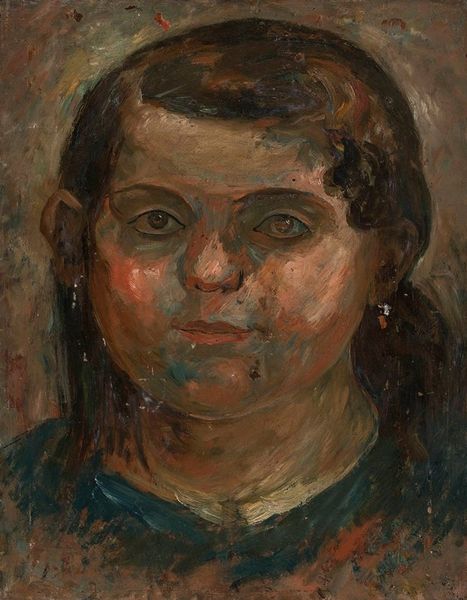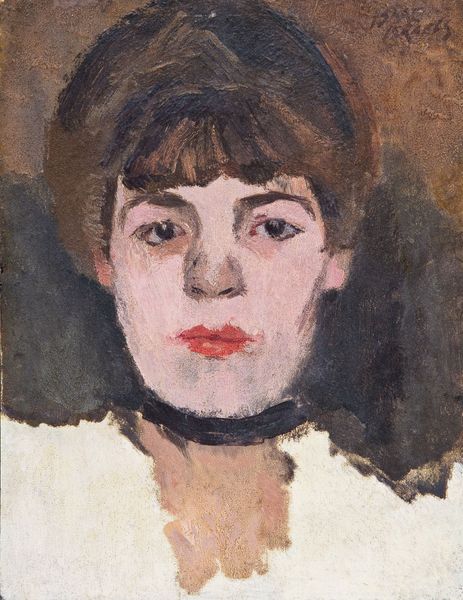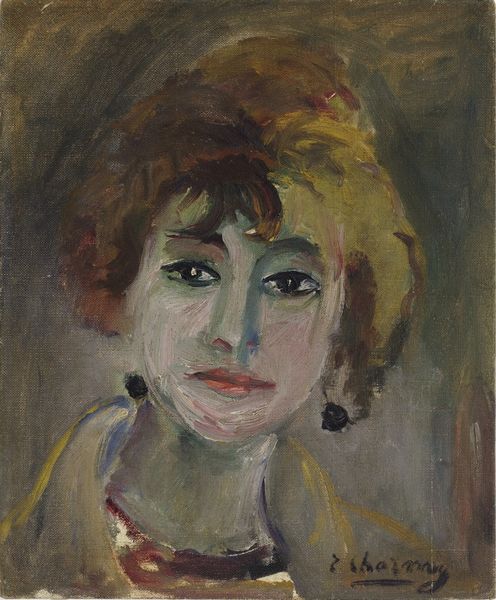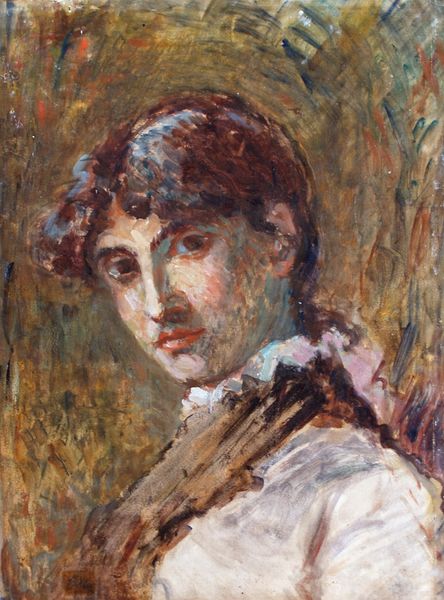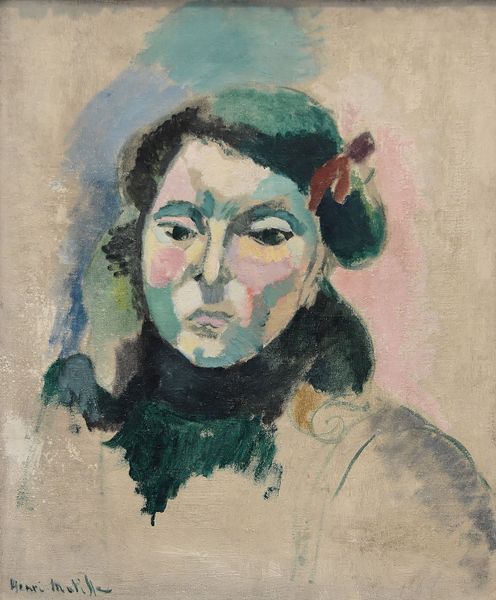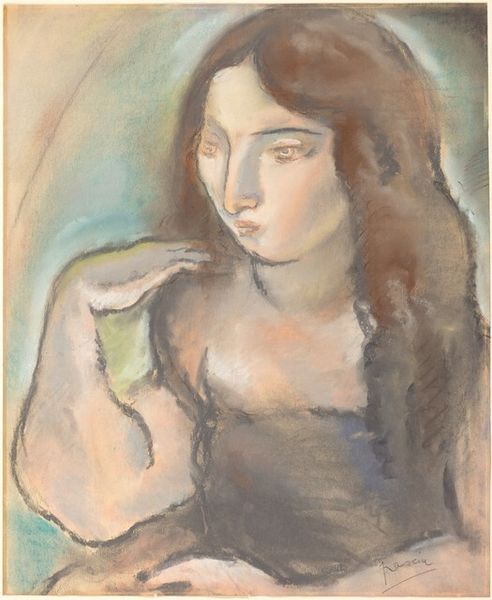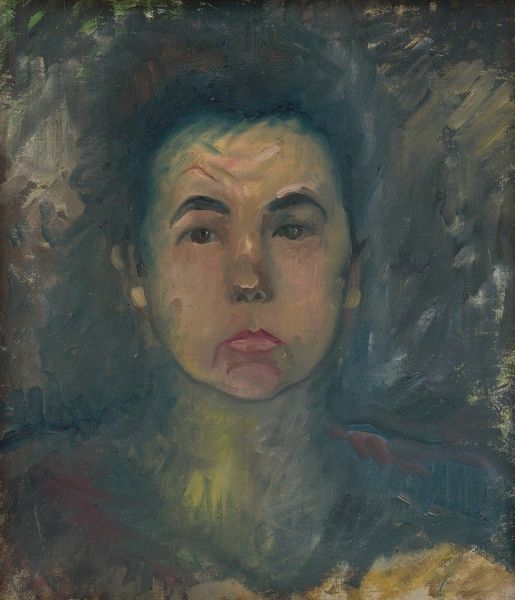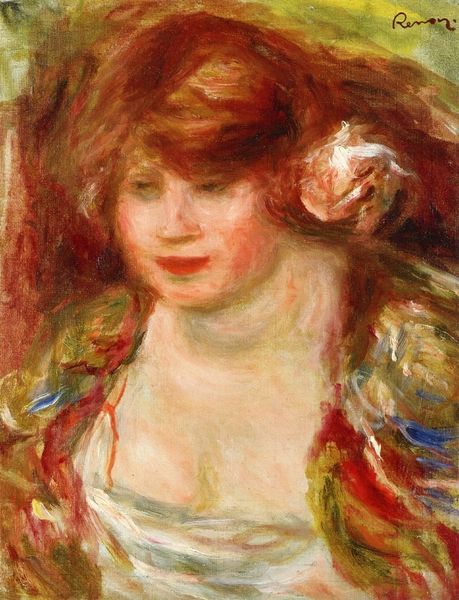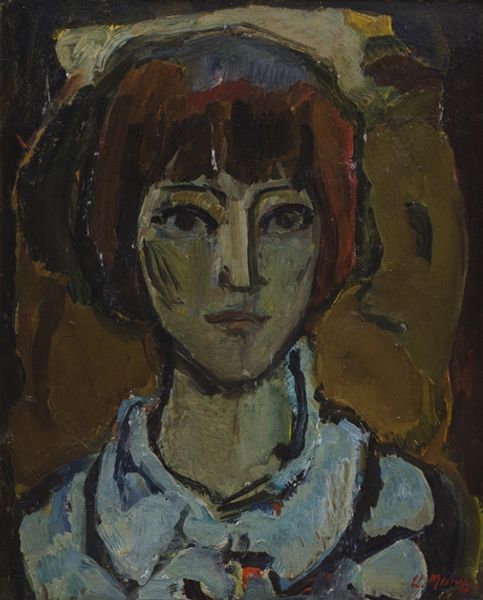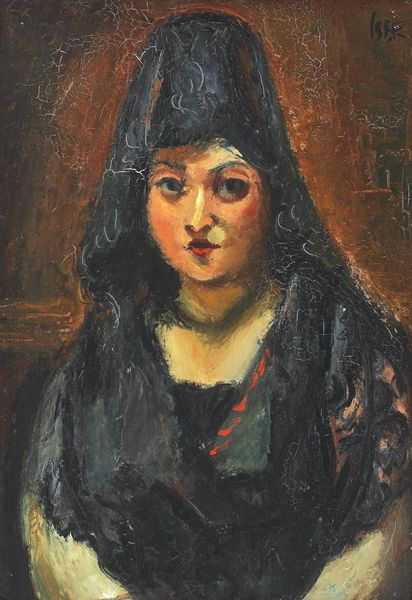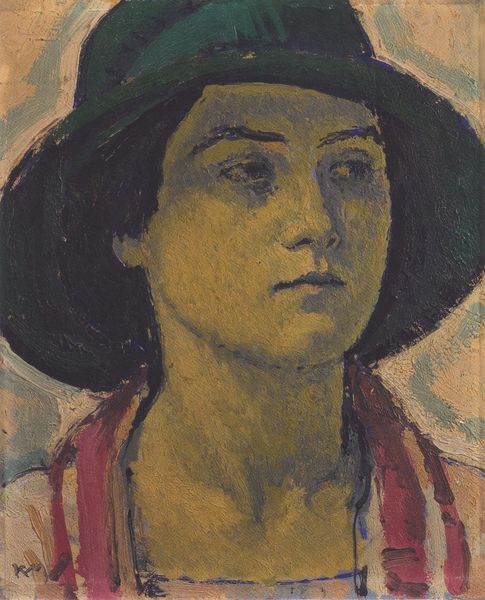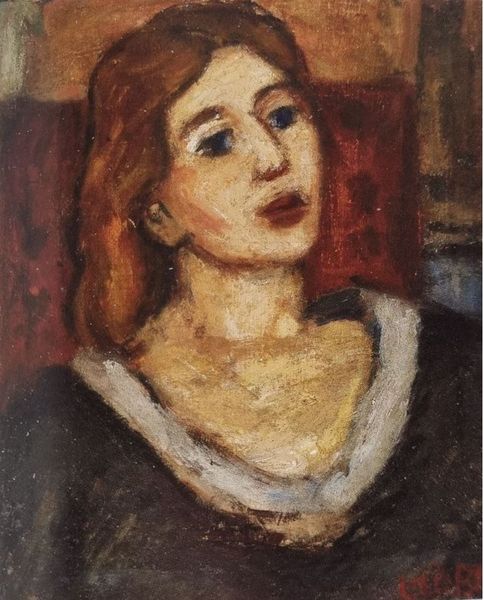
painting, oil-paint
#
portrait
#
painting
#
oil-paint
#
charcoal drawing
#
figuration
#
oil painting
#
portrait drawing
#
portrait art
#
modernism
#
realism
Copyright: Public domain Japan
Editor: This is Yasuo Kuniyoshi’s “Head of a Young Girl,” painted in 1937 using oil. It has a quiet, almost melancholic feel to it. What catches your eye about this work? Curator: Well, consider the date. 1937. What was happening then? Mass production was on the rise, yet the Depression lingered. This painting, it’s oil, yes, but it's almost chalky. See how Kuniyoshi seems to resist a smooth, polished finish? Editor: I do see that. It feels almost…raw. Curator: Exactly! It rejects the sleekness of industrial capitalism. And look at the young girl's gaze. It’s not confrontational, not idealized. The labor that went into producing this image feels palpable, even though it depicts an individual subject. It avoids the kind of image that would have been created and distributed by capitalist forces at that time. Editor: So, it's a deliberate rejection of… mainstream aesthetics? Curator: Precisely! He’s engaging with the very act of image-making, questioning its role and its audience within society. The way that material has been handled to portray its subject becomes almost subversive at that historical point. Editor: I hadn't considered the roughness as a statement in itself. I was focusing too much on the girl's expression. Curator: It's easy to get drawn into the subject, but think about what the *making* of this object tells us. This is labor made visible. Editor: Right, the materiality itself is communicating a message about the conditions of its production and what it’s standing against. I see that now! Curator: And that changes how you look at the girl, doesn't it? The work reflects the state of things in the 30s and the challenges Kuniyoshi's generation experienced with industrialisation.
Comments
No comments
Be the first to comment and join the conversation on the ultimate creative platform.
